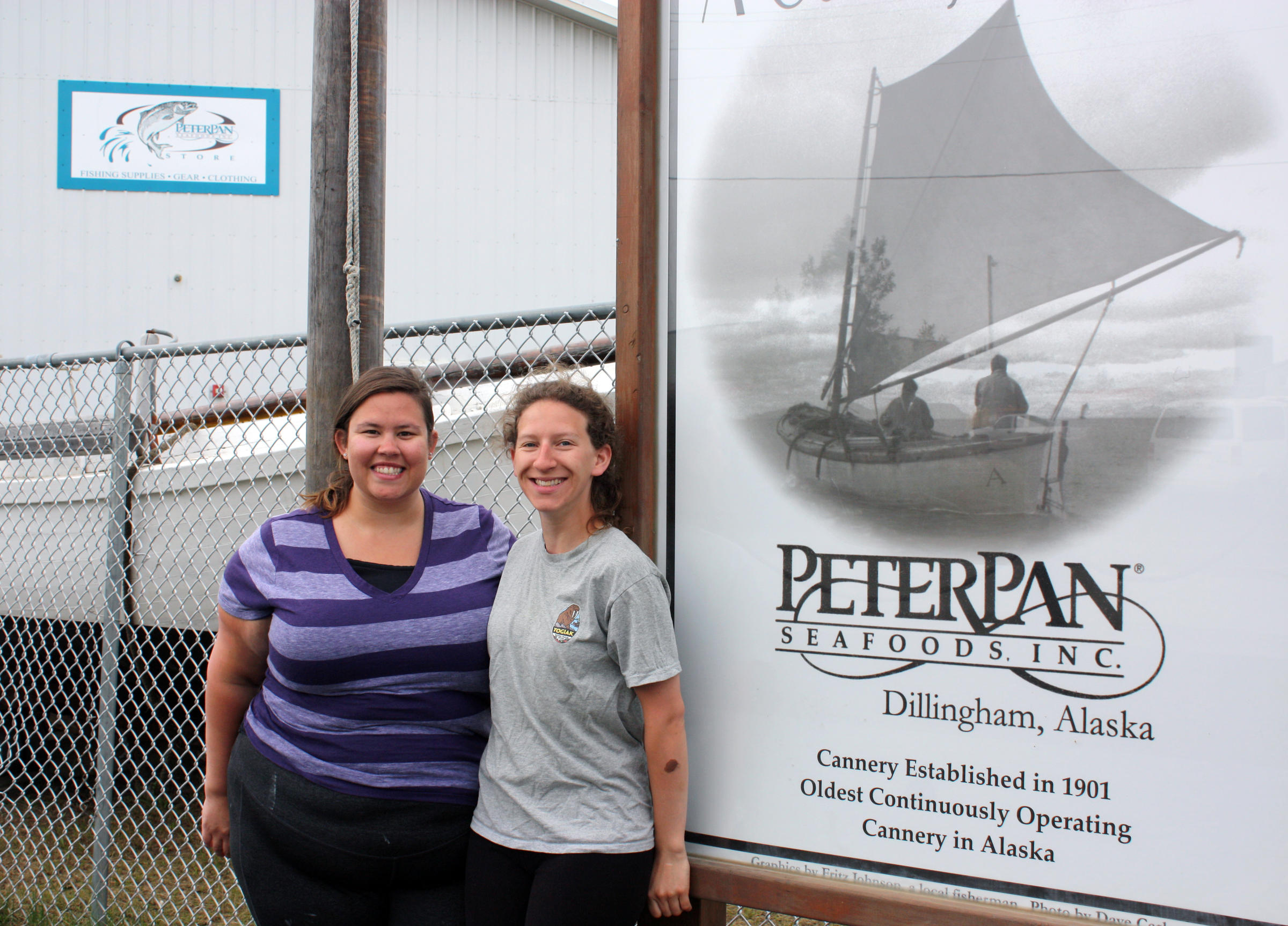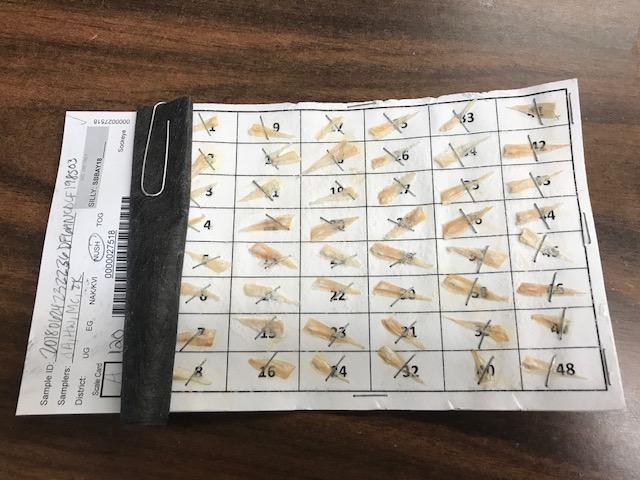
Preschool teacher Hannah Hendrickson said there are two distinct duties for catch samplers working at salmon processing plants around Bristol Bay.
“People oftentimes nickname this job as the pickers and the lickers, so I said, ‘I’m not a licker. I’m only a picker!’ ” Hendrickson said.
Hendrickson is talking about picking freshly caught sockeye out of huge, ice-filled crates so she can mark down their length and gender and weigh every eighth fish.
The licker is her colleague Deven Lisac. Across the table at Peter Pan Seafoods in Dillingham, Lisac was snipping off bits of fins and plucking out fish scales. Saliva is a good enough adhesive to stick fish scales on the thick cards for their journey to the Department of Fish and Game laboratory in King Salmon.
“Grab the tweezers, and then you just give it a lick,” Lisac advised. “And that was fish No. 4, so it goes on slot four.”
The pair are part of the Alaska Department of Fish and Game’s seasonal crew tasked with sampling 240 sockeye a day from each district in the bay. They also sample 200 chums and 200 kings a week.
Biologists can analyze fish scales like tree rings to determine age, as wider sections indicate nutrient-rich summers and narrower ones are scarce winters. Scale-agers in King Salmon have a busy month from mid-June to late July, counting the rings on approximately 46,000 scale samples from all five commercial districts, the Port Moller Test Fishery and the escapement counting towers.

Jack Erickson, a research coordinator with ADF&G in King Salmon, explained that the salmon age classifications of 1.2, 2.2, 1.3, 2.3 and so on represent how many years the fish spent in fresh water before migrating out to sea. A 1.2, for example, means one season in fresh water and two in salt water.
With a giant sockeye run of 51.3 million forecast for this year, Erickson said Bristol Bay fishermen should absolutely take notice of the age of the fish they’re catching.
“1.2s are smaller typically than 1.3s. They’re a year longer in the salt water for growth. (Fishermen) are concerned about their markets as well,” Erickson said. “I think there’s a lot of fisherman, very savvy, that are looking at the same information the biologists are. When they look at the Port Moller Test Fishery, when they look at our age comp(osition)s, when they look at our escapements, they’re wondering the same thing and wanting to have instant access just like the biologists sitting here in King Salmon and in Dillingham.
Providing all that fish data is messy work with hours just as dependent on the tides as fishermen. During the school year, Hendrickson wrangles squirming four-year-olds at the Bristol Bay Native Association’s Head Start program. She’s now doing the same with fish that are just as slippery.
“Sometimes we’re doing an overnight sample that starts at 10 in the evening and goes until 3 in the morning. There’s one time that we got everything cleaned up and a tender from Igushik comes in and we’re like, ‘We’ll take them!’ so we were here doing that stuff again,” Hendrickson said.

Hendrickson is just two weeks into her first season sampling the Nushagak harvest. On the other hand, Lisac is an old pro in her fourth summer with ADF&G.
“Every day, it’s a struggle fighting with dead fish,” Lisac said. “Then when I get home, they’re processing fish at the house, so it never ends. This time of year is fish. I do get tired of eating fish and fish and fish.”
ADF&G has one catch sampler in Togiak and four in King Salmon all sending data to the lab like Hendrickson and Lisac. They’ll be meeting tenders at the dock every day across Bristol Bay until July 19. Erickson said analyzing salmon genetics is just one tool in managing fisheries.
“It’s a predictor. It doesn’t always come in exactly as predicted — matter of fact, they rarely do. Some come in large, and some come in small,” Erickson said. “We don’t take any specific one as a sign that something’s bad or good. It just helps us lead the direction of how we’re going to manage.”




